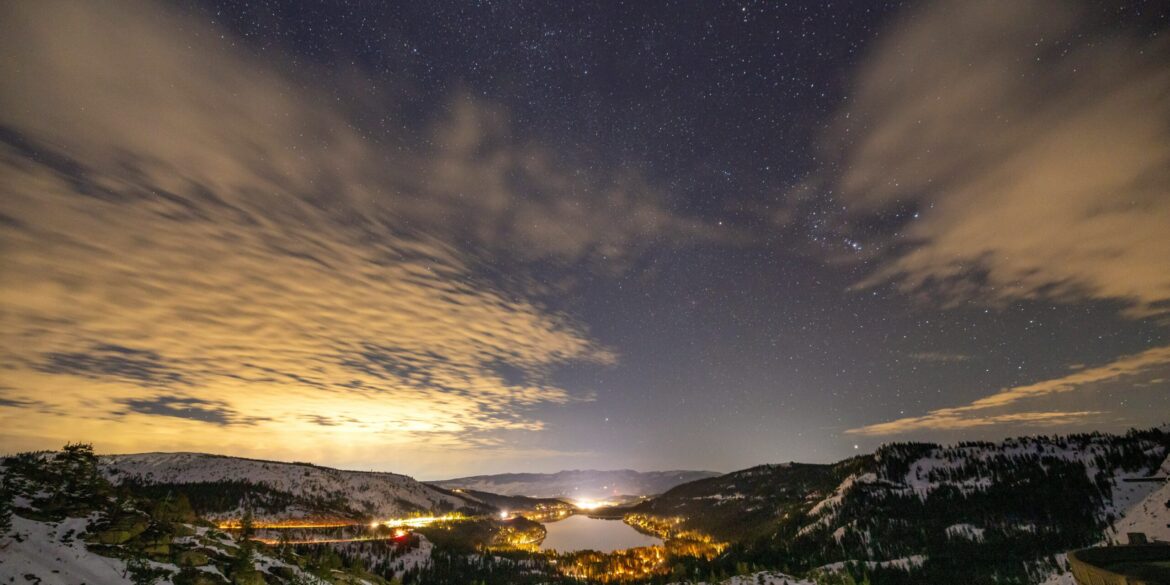On June 19, 2025, a breathtaking celestial phenomenon coincided with Juneteenth celebrations across North America: vibrant auroral displays lighting up the skies far outside their typical polar confines. This rare spectacle originated from a powerful X1.2-class solar flare that erupted from the Sun on June 17, unleashing a coronal mass ejection (CME) toward Earth. When the CME struck our planet’s magnetic shield, it triggered a geomagnetic storm that sent charged particles into the upper atmosphere—exciting oxygen and nitrogen atoms to produce vivid streaks of green, red, blue, and purple across the night sky.
The National Oceanic and Atmospheric Administration (NOAA) and NASA closely monitored the situation. Their joint forecast showed that the aurora’s “viewline”—the southernmost latitude where the lights would be visible—extended deep into the continental United States, most notably over Michigan. Regions typically too far south to witness such phenomena were alerted to a possible visual treat late on June 19. With the Kp index hovering around 3—a level described as “quite pleasing”—observers under dark, clear skies could enjoy a dazzling show.
What made this celestial event especially poignant was its timing: Juneteenth, June 19, marks a pivotal moment in American history—the emancipation of enslaved people in Texas in 1865. Against a backdrop of solemn reflection and celebration of freedom, communities embraced the aurora as a symbolic companion to their festivities. Parks, nature reserves, and public spaces hosted special viewing events, often extending late-night hours so attendees could simultaneously commemorate the holiday and marvel at the cosmic display.
Local tourism bureaus, especially in Michigan, promoted viewing programs, offering astronomy talks and light-clean zones free of city glow for better visibility. Social media was ablaze with aurora snapshots and personal anecdotes—stories of families and friends gathering under glowing skies, creating memories celebrated both in person and online.
City halls in smaller communities reported no significant disruptions to power or communications. Despite initial concerns over potential satellite interference or electrical grid instability from the geomagnetic storm, NOAA and NASA confirmed that systems remained stable. Many observers recounted the experience as surreal: one wrote of feeling a deeper sense of unity—“honoring centuries of struggle and freedom beneath cosmic curtains of light.”
This Juneteenth aurora was not an isolated event. It formed part of a larger pattern of increased solar activity in 2025. Scientists have noted that Solar Cycle 25, now at or near its peak, has produced more frequent and intense flares and CMEs—sufficient to shift auroral visibility farther south than usual. In March and May, earlier solar storms already delivered aurorae observable from northern U.S. states; a May 10–13 G5-class geomagnetic storm—known as the “Mother’s Day” storm—lit skies as far south as Florida and the Bahamas. The June flare thus added momentum to what many skywatchers are calling a “once-in-a-decade” opportunity to see northern lights from unexpected latitudes.
Aurora experts remark that the rich colors viewers saw owe their genesis to the composition of Earth’s atmosphere. When solar particles collide with oxygen at altitudes around 100 kilometers, they often emit the iconic green and red glow. Nitrogen interactions can produce deep blue or purple hues . This specific event’s multicolored brilliance—combining blues, purples, greens, and reds—resulted from a particularly energetic CME colliding with a varied atmospheric composition.
The confluence of cosmic wonder and Juneteenth holds profound symbolic resonance. The symbolism of liberation under luminous skies elevated some community celebrations into reflective gatherings. A cultural nonprofit in Michigan organized a Juneteenth-night hike culminating at an open-field observatory, where narrative narration wove together the story of emancipation with the history of auroras. Attendees, many experiencing an aurora for the first time, expressed that the event felt like a moment of transcendence and shared humanity.
Scientists also used the opportunity for increased public engagement. Observatories offered open-door nights, hosted Q&As with solar physicists, and invited photographers to a “capture the cosmos” challenge. Their message was clear: while awe-inspiring, the solar flare also served as a critical reminder that humanity depends on robust monitoring of space weather—given solar storms’ potential to disrupt vital infrastructures. NOAA’s Space Weather Prediction Center noted spikes in KP index readings lasting until early June 21, although no major geomagnetic disturbances were reported in that aftermath.
Importantly, the Juneteenth aurora event reflects a broader pattern of changing skywatching conditions in this solar maximum period. According to NOAA data, the odds of experiencing at least minor solar radiation storms (S1) and radio blackouts (R1–R2) remained at 10–70% between June 19–21. Meanwhile, satellite operators assured users that current storms remain far from the 1859 Carrington Event that once sparked global auroral visibility and telegraph malfunctions.
Nonetheless, this solar flare reminds us how deeply intertwined nature is with human culture. On a night marking national reckoning and triumph, the skies themselves chimed in—a cosmic reminder that freedom and natural wonder are both integral to our shared experience. As solar maximum continues, scientists predict more opportunities for aurora watchers this summer and early fall . For now, the Juneteenth lights will linger in memory—a rare and beautiful alignment of history, science, and sky.

